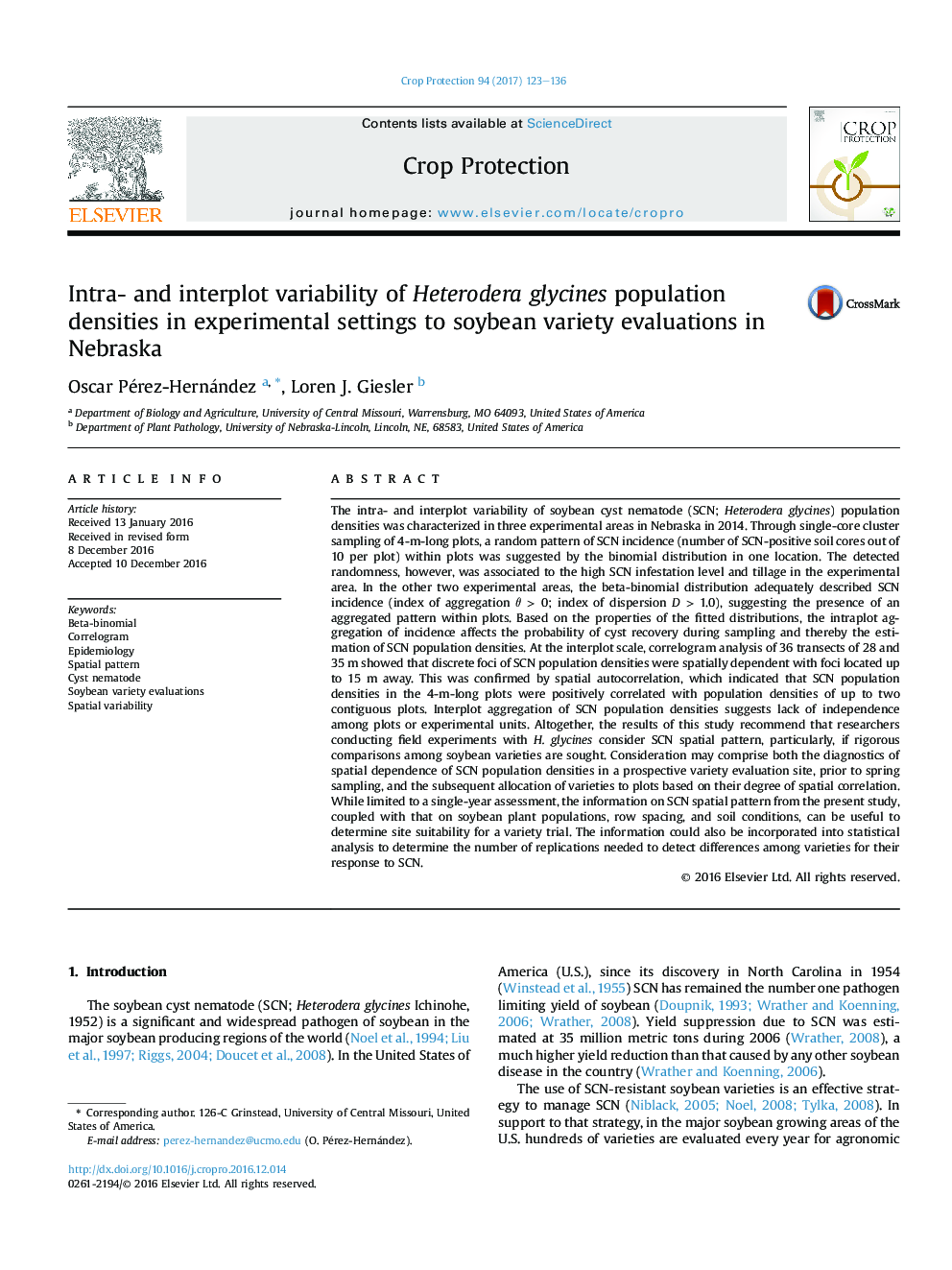| Article ID | Journal | Published Year | Pages | File Type |
|---|---|---|---|---|
| 5760931 | Crop Protection | 2017 | 14 Pages |
Abstract
The intra- and interplot variability of soybean cyst nematode (SCN; Heterodera glycines) population densities was characterized in three experimental areas in Nebraska in 2014. Through single-core cluster sampling of 4-m-long plots, a random pattern of SCN incidence (number of SCN-positive soil cores out of 10 per plot) within plots was suggested by the binomial distribution in one location. The detected randomness, however, was associated to the high SCN infestation level and tillage in the experimental area. In the other two experimental areas, the beta-binomial distribution adequately described SCN incidence (index of aggregation θ > 0; index of dispersion D > 1.0), suggesting the presence of an aggregated pattern within plots. Based on the properties of the fitted distributions, the intraplot aggregation of incidence affects the probability of cyst recovery during sampling and thereby the estimation of SCN population densities. At the interplot scale, correlogram analysis of 36 transects of 28 and 35 m showed that discrete foci of SCN population densities were spatially dependent with foci located up to 15 m away. This was confirmed by spatial autocorrelation, which indicated that SCN population densities in the 4-m-long plots were positively correlated with population densities of up to two contiguous plots. Interplot aggregation of SCN population densities suggests lack of independence among plots or experimental units. Altogether, the results of this study recommend that researchers conducting field experiments with H. glycines consider SCN spatial pattern, particularly, if rigorous comparisons among soybean varieties are sought. Consideration may comprise both the diagnostics of spatial dependence of SCN population densities in a prospective variety evaluation site, prior to spring sampling, and the subsequent allocation of varieties to plots based on their degree of spatial correlation. While limited to a single-year assessment, the information on SCN spatial pattern from the present study, coupled with that on soybean plant populations, row spacing, and soil conditions, can be useful to determine site suitability for a variety trial. The information could also be incorporated into statistical analysis to determine the number of replications needed to detect differences among varieties for their response to SCN.
Related Topics
Life Sciences
Agricultural and Biological Sciences
Agronomy and Crop Science
Authors
Oscar Pérez-Hernández, Loren J. Giesler,
